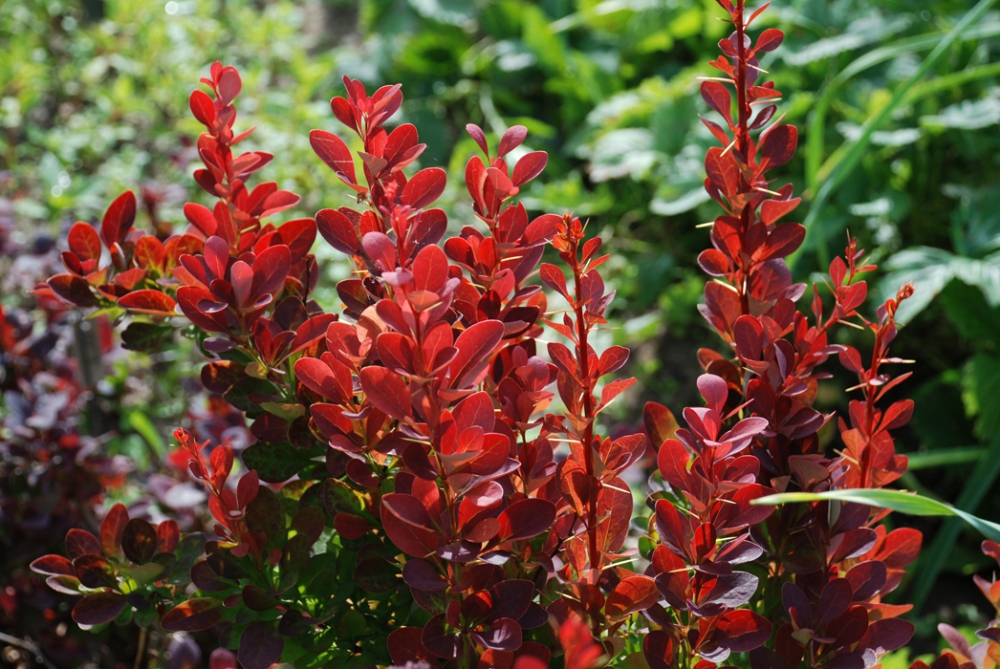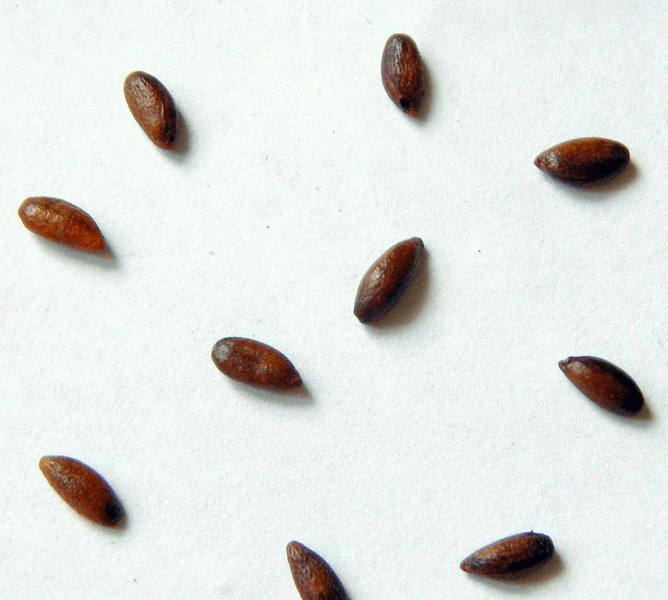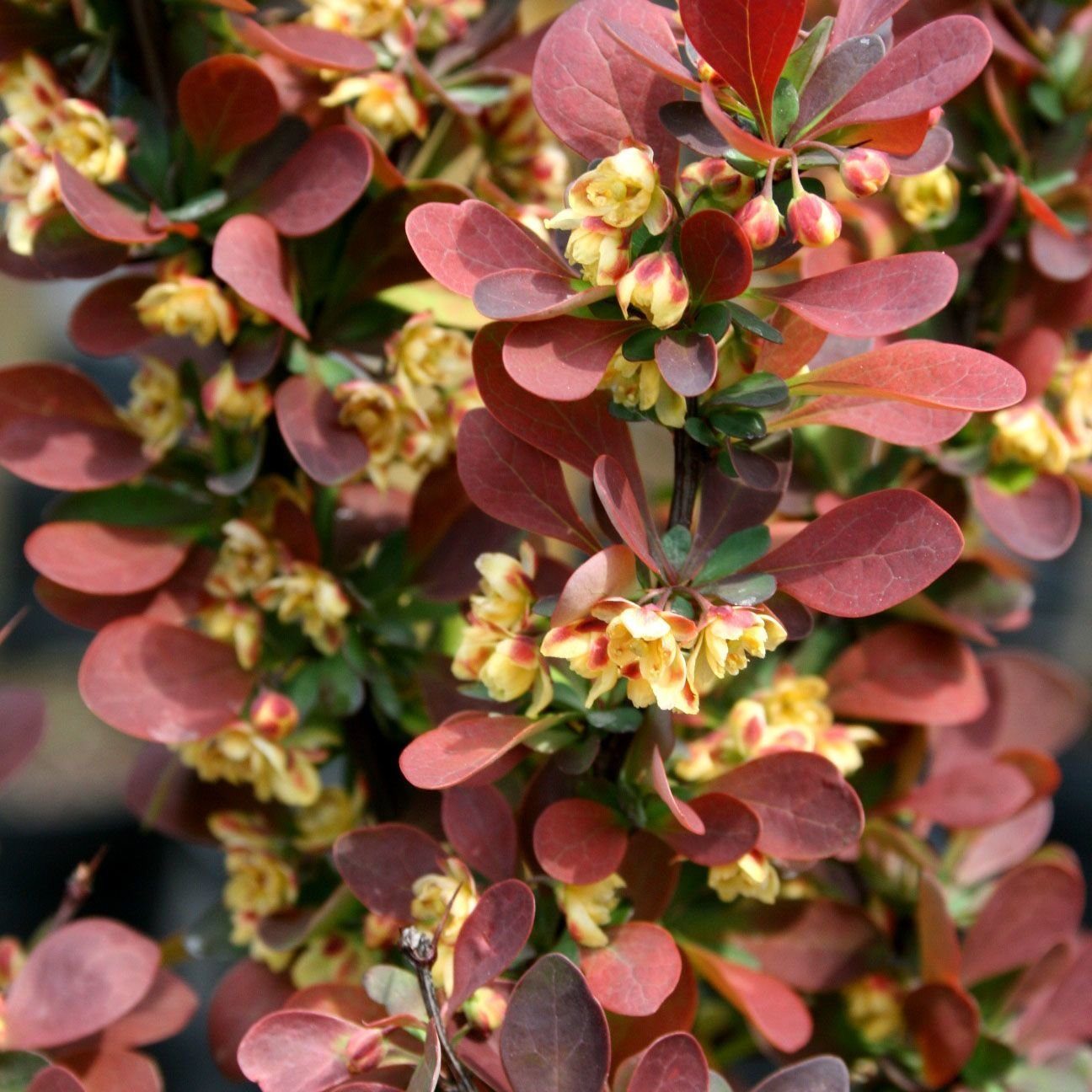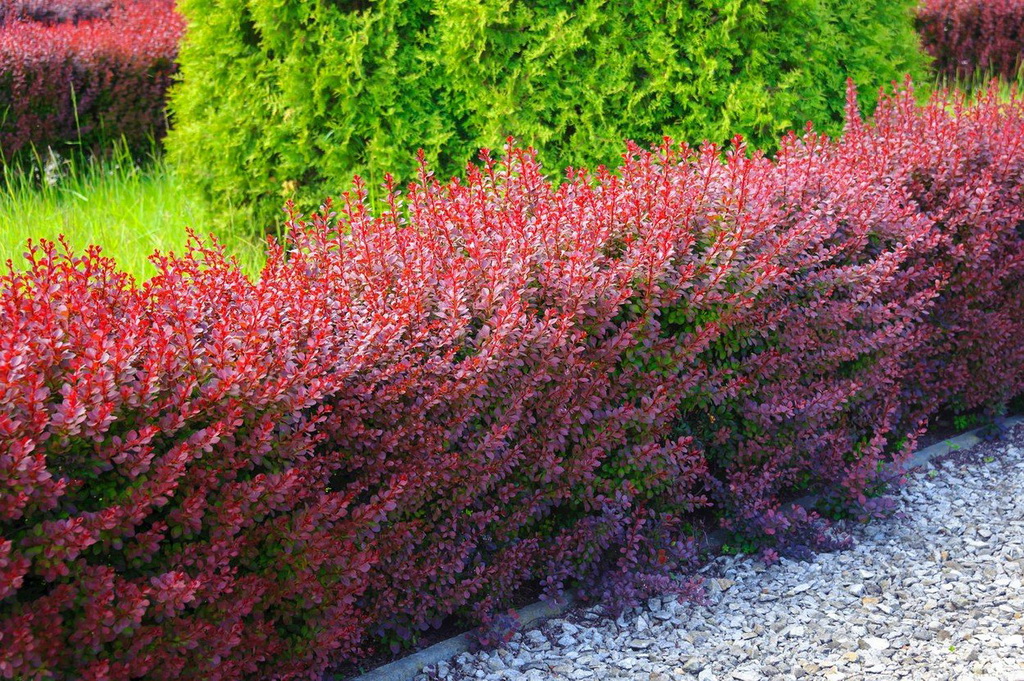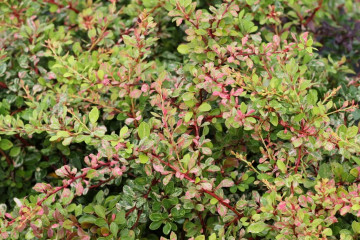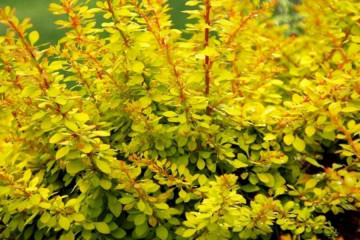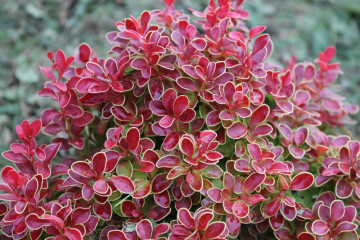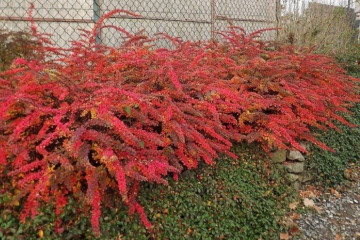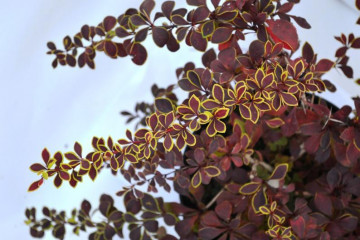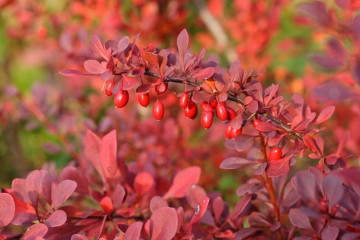Barberry Red Pillar - description and cultivation
Content:
Ornamental plant barberry Red pillar is one of the most compact shrubs. An additional zest is given to it by the presence of a huge number of berries, which remain on the seedling all winter. The Thunberg barberry Red pillar was brought to Russia only in the last century. It grew in mountainous areas, and after that the breeders adapted it to almost any climate.
Description of barberry Red pillar
This species has the full name of the Thunberg barberry Red pillar. The mature bush reaches a height of 1.5 meters. The crown is no more than 50 cm.
The branches of the plant are straight and very strong, equipped with small thorns. The name Red Pillar is due to the color of the leaves. The dark red color can change depending on weather conditions and light levels.
When planted in a shady area, the leaves begin to fade gradually, and then acquire a grayish tint. This is the reason for the recommendation to plant this barberry in lighted, open places.
Planting a plant
This seedling is best suited for light, drained soil. The place should be as sunny as possible and protected from wind loads.
It is allowed to plant a plant in the ground only after the soil has completely warmed up. For this bush, it is important to observe the distance between the planting material. The minimum should be at least one and a half meters. This requirement is due to the plant's great love for sunlight.
To form a decorative hedge, 3 young bushes are planted simultaneously in each hole in a common trench. Another landing option - the holes are staggered.
Planting from seeds
For propagation by the seed method, berries are collected from the barberry in the fall. The seeds inside are washed and disinfected in potassium permanganate for at least 1 hour. The disinfected material is stored in the dark until next year.
In October, before the cold snap, the seeds should be planted in prepared soil.
Planting seedlings in open ground
Already formed seedlings are planted in the ground in the spring. This type assumes compliance with the landing pattern.
The distance between plants should be at least 3 centimeters. Within two years, young bushes should not be touched, they must grow in this place.
In the third year, they need to be transplanted to a permanent, pre-planned place.
How to care for barberry Red Pillar
This type of ornamental shrub does not require special care. The main thing is to carry out timely pruning and monitor the external condition of the plant. With external changes that are uncharacteristic for this species, it is necessary to correct the irrigation regime in time and feed the barberry.
Watering
Red pilar is a barberry that does not require frequent watering. When the topsoil dries up, irrigation is carried out with warm water directly under the root.
olive should be accompanied by loosening of the substrate around the planting. In dry weather, it is advisable to lay the ground around the bush with mulch.
Top dressing
Organic fertilizers are considered the most useful for this seedling. This can be mullein infusion or compost.
Before flowering, the bushes need to be fed with a composition of potash and phosphate fertilizers.
Preparations containing nitrogen are often undesirable for feeding. It is recommended to use them no more than 3 times a year. It can be an infusion of urea, so beloved by all summer residents.
Pruning
Red Pillar perfectly tolerates even heavy stump pruning. For sanitary purposes, before the formation of buds, it is required to remove all frozen parts of the bush.
Haircuts for decorative purposes are carried out in spring or late autumn.
Reproduction methods
Red pillar is a barberry that can be propagated in different ways:
- Seeds. The longest way. Seed preparation takes almost a year. In the fall, they are harvested from the fruits and only the next year, in the fall they are planted in prepared soil.
- Cuttings. In an adult plant, 15 centimeter shoots are cut off with a sharp knife. All the leaves are removed from the cutting from the bottom. Prepared branches are soaked in Kornevin's solution. Germination of cuttings should take place in greenhouse conditions.
- Layers. The young shoot of an adult bush deviates and attaches itself to the ground by any means at hand. The next year, the shoot is separated from the parent bush and transplanted to a new place.
- By division. An adult bush is dug up and carefully cut with a knife. Before this, the roots must be untangled as much as possible so as not to severely damage the roots. The resulting incisions must be treated with any growth stimulator before planting.
Any procedures must be performed with a well-disinfected instrument.
Diseases and pests
This species is very resistant to garden insects and diseases.
With improper care and selection of a planting site, the seedling can get sick with powdery mildew or rust. For treatment, it is recommended to use colloidal sulfur.
Pests that can damage the plant - aphids, moths. As a rule, they appear from neighboring unkempt areas or due to the presence of weeds.
To protect the plant from the invasion of aphids, the bush is sprayed with a tobacco solution. In the autumn, it is important to cultivate the land with chemicals, for example Decis.
Flowering period
Barberry Thunberg Red pillar blooms in late spring, early summer. Flowers have two shades: the inside is yellow and the outside is red. Inflorescences are most often collected in a cluster of several pieces or are located singly.
Preparing for winter
For the winter period in the first three years after planting, compulsory shelter with special materials is required. Spunbond, lutrasil or plain burlap are ideal for these purposes.
Barberry tolerates winter well, but in severe frosts, the tops of the stems can freeze slightly. Most often, this trouble occurs on annual shoots. If the plant is already an adult, then it is necessary to install a frame made of boards. This will help protect the bushes from wind gusts and snow loads.
Use in landscape design
Very often, decorative barberry is used in landscape design when creating low hedges.
Decorators also use Red Pillar for single plantings. The appearance of a columnar plant creates a bright accent on any site. When creating mixed compositions with other perennial plants, the decorative properties become even more pronounced.
Healing properties
A description of the main beneficial qualities of barberry can be found in traditional and folk medicine.
The berry has a lot of useful properties. It is used as a choleretic, anti-inflammatory, antipyretic agent.
In folk medicine, it is recommended to use barberry to relieve pain syndromes in gastric colic.
The juice of this culture induces appetite and has a laxative effect.
Barberry of the Red Pillar variety is the brightest representative of ornamental plants. Professional landscape designers use it with great pleasure in their work. The beneficial properties of this plant are widely used in the medical field. Ease of care and beauty are the main features thanks to which ordinary gardeners are happy to acquire this plant.
